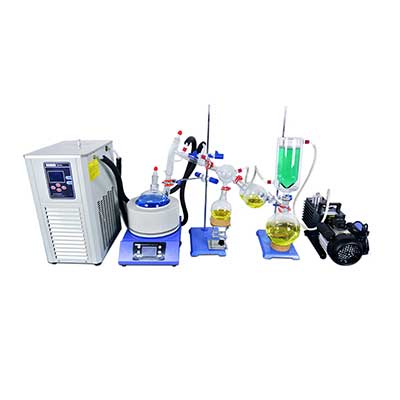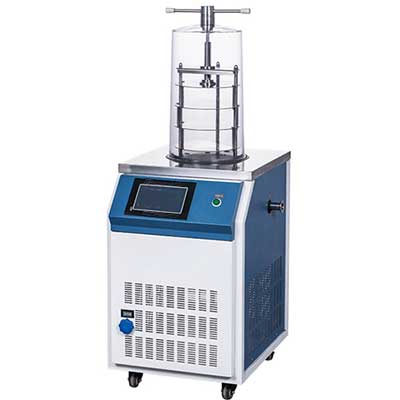-
WhatsApp
-
Email
As a common equipment in the laboratory, the rotary evaporator has a wide range of uses. It is mainly used in the industries of concentration, crystallization, drying, separation and solvent recovery of pharmaceutical, chemical and biopharmaceutical industries. How to choose and buy such a hot vacuum distillation equipment, how to use it after purchase, what to pay attention to during use, and how to maintain it after use to ensure the long-term use of the equipment. ZZKD laboratory equipment manufacturers provide detailed answers for you.
1. How to choose a rotary evaporator equipment for your own use?
● In the laboratory of universities or individuals and enterprises that just do some reaction tests, you can choose a small rotary evaporator when choosing a rotary vacuum evaporator. 2L, 5L rotary evaporators are the most suitable.
RE-2000 rotary evaporator (2L) and RE 501 rotary evaporator (5L) are recommended
RE-2000 rotary evaporator (2L) and RE 501 rotary evaporator (5L) are recommended
 |
 |
| 2L Rotary Evaporator | 5L Rotary Evaporator |
For small batches of experimental reaction materials, a laboratory scale rotary evaporator can be selected.
R-1010 Rortayr Evaporator (10L) and RE-2002 Roratry Evaporator (20L) are recommended
If you need to do pilot experiments, you can choose this large rotary evaporator.
 |
 |
| 10L Rotary Evaporator2 | 20L Rotary Evaporator |
If you need to do pilot experiments, you can choose this large rotary evaporator.
R1050 Rortayr Evaporator (50L) and RE-5002 Rortayr Evaporator (50L) are recommended
 |
 |
| 50L Rotary Evaporator | Pilot Rotary Evaporator |
2. How to use vacuum rotary evaporator efficiently?
A complete rotary evaporation evaporator requires the heating of a water bath, the vacuum environment provided by the vacuum pump, and the condensing environment created by a cryopump and a condensation coil to collect materials. These three main devices can achieve the best operating conditions, and naturally can improve the efficient operation of the rotary evaporator system.
● High and low adjustment: Manual lifting, turn the handwheel above the machine column, turn forward to rise, and reverse to fall.
Electric lift, the host that touches the up button will go up, and the host that touches the down button will go down.
● The condenser has two external joints for cooling water. One end is connected to the water and the other end is connected to the tap water. Generally, the tap water is connected. The lower the temperature of the condensate, the better the effect. For vacuuming.
● Before turning on the machine, first turn the speed control knob to the minimum, press the power switch indicator to light up, and then slowly turn right to the required speed. Generally, large evaporation flasks are used at low speeds, and low-viscosity solutions are used at lower speeds. Flasks It is determined according to the rotary evaporator model, and the amount of solution is generally not more than 50%.
● During use, the pressure should be reduced first, and then the motor should be turned to rotate the distillation flask. At the end, the motor should be stopped before venting to prevent the distillation flask from falling off during rotation.
 |
 |
| Circulating Water Vacuum Pump | Chiller |
3. What should I pay attention to when using the rotary evaporator?
● Glass parts should be handled with care, and should be washed, dried or dried before assembly.
● Each grinding mouth, sealing surface seal ring and joint need to be coated with a layer of vacuum grease before installation.
● Water must be added to the heating tank before power is applied.
● The fuse must be screwed into the safety hole to avoid damaging the flask.
● Check if you cannot evacuate.
-Whether each joint and interface are sealed.
-Whether the sealing ring and sealing surface are effective.
-Is the vacuum grease applied between the spindle and the seal?
-Whether the vacuum pump and its hose are leaking.
-Whether the glass is cracked, broken or damaged.
● About vacuum
-Vacuum degree is the most important process parameter of rotary evaporator, and users often encounter problems with vacuum degree. This is often related to the nature of the solvent used. Industries such as biochemical pharmaceuticals often use water, ethanol, acetic acid, petroleum ether, chloroform, etc. as solvents. Generally, vacuum pumps cannot withstand strong organic solvents, and special vacuum pumps can be used.
-Method for inspecting the instrument for air leaks: pinch off the external vacuum leather tube one by one, and observe whether the vacuum gauge on the instrument can keep the air leak for five minutes. If there is air leakage, check whether the sealing joints and the sealing rings on the rotating shaft are effective (see Maintenance). On the contrary, if the instrument is normal, check the vacuum pump and vacuum pipeline.
● About motor temperature rise
-Rotary evaporator equipment motor adopts three-phase, 220V special motor, E-level insulation, polyester high-strength enameled winding, continuous use of motor surface temperature rise (motor surface temperature when the altitude does not exceed 1000 meters and the ambient temperature does not exceed 40 ° C The difference from the ambient temperature) does not exceed 45 ° C, which is normal. If the temperature rise exceeds 45 ° C, check the relevant transmission lubrication system.
● During vacuum distillation, when the temperature is high and the vacuum is low, the liquid in the bottle may bump. The vacuum should be reduced at this time to allow the distillation to proceed smoothly.
● When stopping evaporation, stop heating first, then stop vacuuming, and finally turn off the power to stop rotation.
Rotary Evaporator Installation Video
4. Maintenance of rotary evaporator
● Inspect the instrument carefully before use, if the glass bottle is damaged, and if the interfaces are consistent, pay attention to handling.
● Wipe each connector with a soft cloth (can be replaced with a napkin), and then apply a little vacuum grease. Vacuum grease must be covered after use to prevent lime sand from entering.
● Do not overtighten the interfaces. Regularly loosen the joints to prevent the connectors from biting due to long-term locking.
● Turn on the power switch first, and then let the machine run from slow to fast. When the machine is stopped, keep the machine in a stop state, and then turn off the switch.
● The PTFE switch cannot be tightened too much, and the glass is easily damaged.
● After each use, you must use a soft cloth to wipe away all oil stains, stains and solvents left on the surface of the machine, and keep it clean.
● After shutdown, loosen the PTFE switches, and the PTFE pistons will be deformed if they are stationary for a long time.
● Regularly clean the seal ring by removing the seal ring, checking for dirt on the shaft, wiping it with a soft cloth, then applying a little vacuum grease, and reinstalling it to keep the shaft and seal ring smooth.
● Do not allow water to enter the electrical part, and it is strictly forbidden to get wet.
The above are some tips on how to buy and use a rotary evaporator for ZZKD laboratory equipment manufacturers.


















